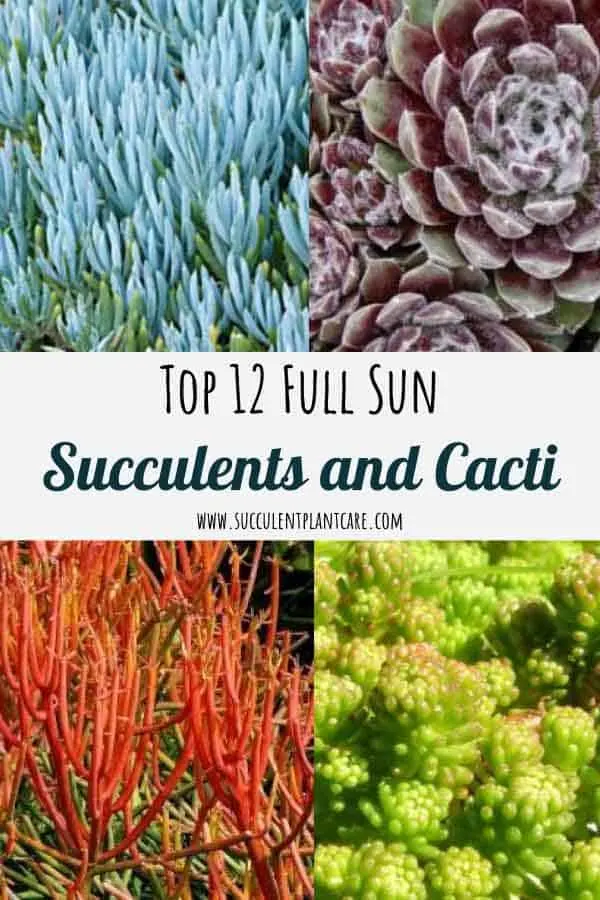Cacti and succulents are known for their drought tolerant nature and water holding properties. Cacti and succulents are usually referred to as desert plants.
It is common to assume that they need very bright and intense heat to grow. Most succulents and cacti actually do well in bright locations with partial shade or some protection from intense sun exposure.
Depending on where they originate from, some species can not tolerate full sun and will suffer from sun damage when exposed to intense heat. Other species are better at handling full sun and thrive in these conditions.

Here are a few cacti and succulents that will do well in full sun:
Agave
Agave is a large genus of succulents forming rosette shapes. They thrive in sunny locations, light shade and full sun. Agave species vary widely, some are dwarf species and others are huge plants capable of growing up to 10 feet tall. They can be cultivated in ground making for an attractive and interesting landscape.
They can also be grown in pots or containers. Some agave plants are more cold resistant than others, depending on the region where they are from. Most agave plant will tolerate intense sun and heat and are very hardy plants.
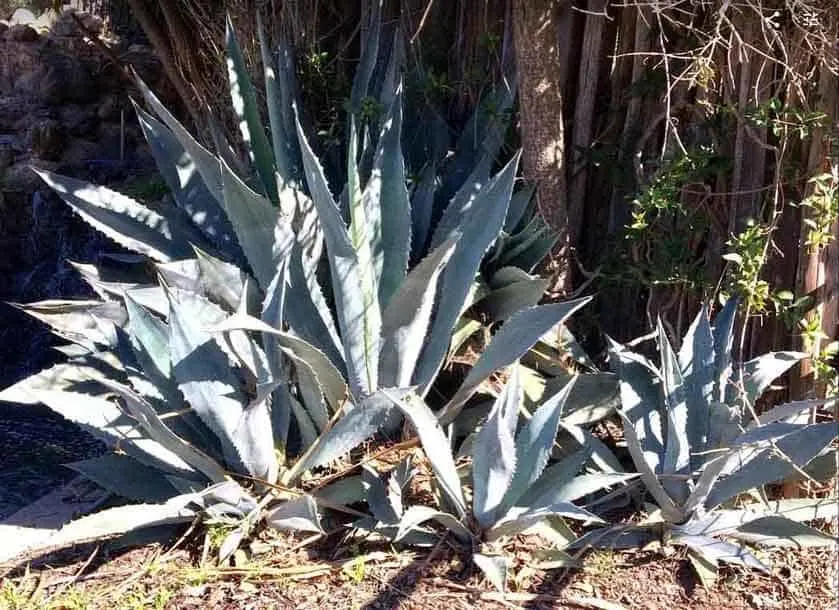
Aloe
Aloe is a large and popular genus consisting of small dwarf species and large tree-like species growing up to 30 feet (10m). They have thick, fleshy, green to bluish-grey-green leaves. Some varieties have whites flecks on the stem surfaces. The dwarf species are very suitable as indoor plants in pots or containers.
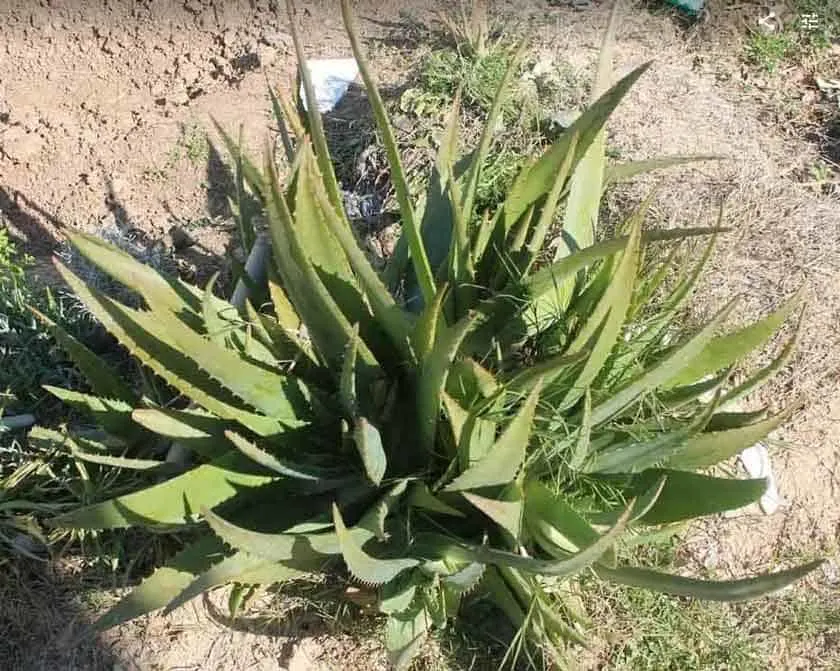
Most larger aloe species will do well in full sun and can be planted outdoors as landscape plants or in large containers. These are low maintenance plants that require very little attention. Some large species will tolerate mild frost with little to no damage to the plant.
Euphorbia Tiruacalli (Firestick or Pencil Tree Plant)
Euphorbia is a large genus of succulents with over 2,000 species. Most Euphorbias are native to Africa and Madagascar. Many euphorbia species will tolerate full sun. One of them is Euphorbia Tiruacalli (Firesticks, Pencil Tree).
These have small and slender leaves with cylindrical branches. Their color ranges from green to orange-red and intensify during colder winter months. These plants love full sun, which help to give them their distinct coloring. These are hardy plants that require very little care once established. They need to be watered more during extended periods of intense heat or heat waves.
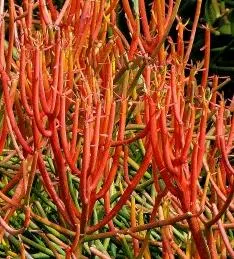
Aeoniums (Tree Houseleek)
Aeoniums are most commonly known for their striking rosettes with waxy leaves growing out of their stems. Stems can be long and branched-out or short and stubby. A unique feature of aeoniums is the way they grow and multiply.
They reproduce and form offsets from a single flowerhead. New offsets emerge from a single flowerhead which then dies after producing several offsets. Aeoniums come in a number of varieties, colors, shapes and sizes. Most aeoniums are monocarpic plants, meaning they die once they produce a flower.
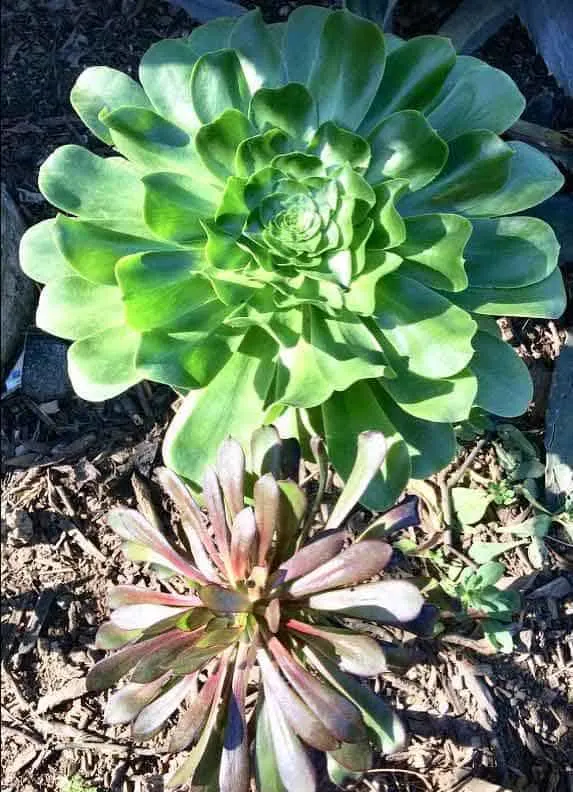
Aeoniums are hardy plants and can withstand cold. They grow best in full sun to partial shade. Aeoniums go dormant in really hot and dry weather conditions. Their leaves will curl and drop to prevent excessive water loss. Their true growth period is during winter or spring. They can be grown in ground or in containers.
Senecio Mandraliscae (Blue Chalk Sticks)
These are small, evergreen succulents that branch and spread from the base, providing for ideal groundcover or shrub for your landscape. Their lovely blue-green, silvery hue make them an attractive choice for your garden or as container plants. Their fleshy leaves are thin and finger-like in appearance. They can also serve as attractive trailing plants in containers.
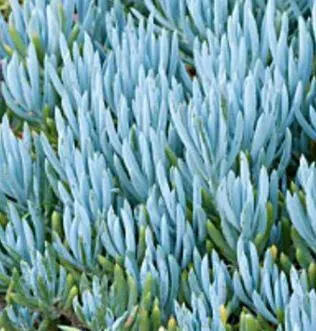
These plants like full sun or bright light. They need bright light to achieve their true color potential. If growing indoors as container plants, they can be brought outdoors in the warmer months to receive more sun. They produce small white and yellow flowers.
Sedums (Stonecrops)
Sedums or stonecrops, are easy succulents to grow. Sedums are low growing, evergreen perennials that make excellent groundcovers. They grow by spreading and sprawling vertically. They can also be grown in containers and their growth are easier to control in containers. They offer a variety of interesting shapes and sizes for the garden.
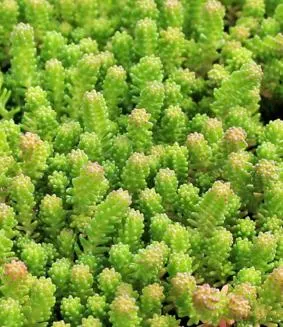
Sedums are low maintenance plants and require very little attention. It is easier to kill a sedum with too much care than with neglect. They thrive in bright, sunny locations and can tolerate full sun once acclimated. These plants are easy to propagate and spread.
Shorter varieties can grow anywhere a part of the plant is touching the soil. The plant will send out roots from where the stem or leaf is touching the ground and root itself, which is often enough to get a new plant started. They are able to withstand heat, lots of sunlight with little precipitation, and are also frost hardy making them ideal outdoor plants.
Sempervivum (Hens and Chicks)
Hens and chicks are amazing and very popular succulent plants. Known for their striking beauty and variety, they are popular as houseplants as well as landscape plants. They multiply by growing clusters of small baby chicks around the mother plant, giving them their name “Hens and Chicks”.
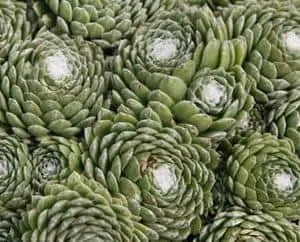
Hens and chicks are easy to grow and come in many different varieties of colors, sizes and textures to choose from. Some can grow very large and some remain tiny.
They can grown in full sun or partial shade. But the optimal coloration is achieved when placed in full or bright sunlight. They need adequate moisture during the hottest months of the year, but generally do not like to be overwatered or sitting in water. To propagate, extract the baby chick from the mother plant and plant as is.
Crassula Ovata (Jade Plant)
Crassula is a large genus of succulent plants. One of the most common of them is Crassula Ovata or Jade Plant (also known as money tree, lucky plant, or friendship tree).
They are native to South Africa and Mozambique. Jade plants are evergreens. They are recognized for their thick, fleshy, shiny, smooth leaves that grow in opposite pairs. Leaves range in color from dark jade green in the shade to red on the edges when exposed to direct or full sunlight.
Some varieties have a golden yellow-green hue to their leaves (known as Crassula Ovata or Hummel’s Sunset). Their branches thicken with age.
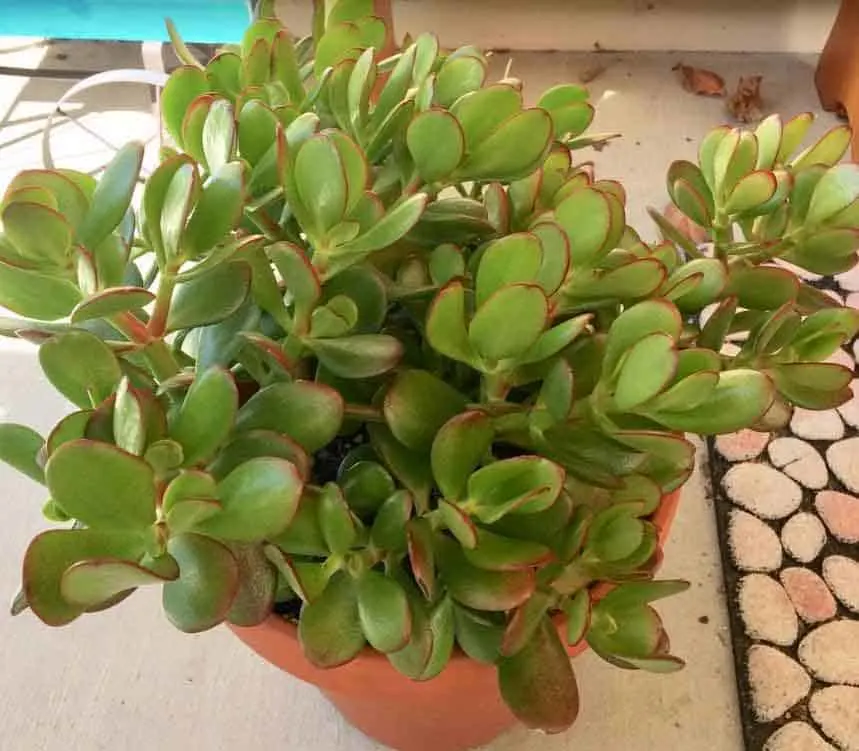
Jade plants are forgiving, low maintenance plants. They can thrive in different lighting conditions. They can do well in full sun once acclimated. Their leaves turn a reddish color, especially at the tips when exposed to full sun.
Opuntia (Prickly Pear Cactus)
If you are looking for a plant that will revel in the sun’s rays, opuntia or prickly pear cactus is a great choice. They can be easily identified from other cacti species by their round, flattened joints called pads. Their fleshy pads grow in segments or columns.
Their unique shape and large showy flowers make them an ideal choice for your garden or landscape. These plants have long been cultivated in Mexico as a food source for their edible fruits and as natural sweeteners. These plants need to be handled with caution due to their sharp spines. They can also be grown in containers to help control their growth.
Their pads can easily root and start a new plant.
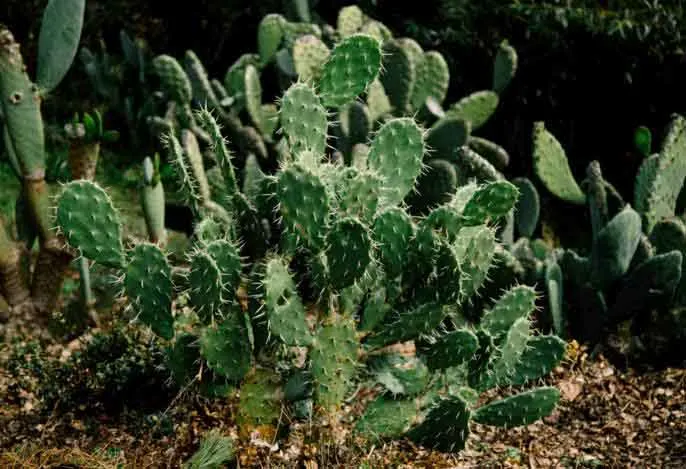
Cereus
Cereus are typically tree-like columnar plants with well-defined ribs and large spines. They can grow very large and tall. The flowers are nocturnal meaning they bloom at night, and are usually large, white in color and fragrant.
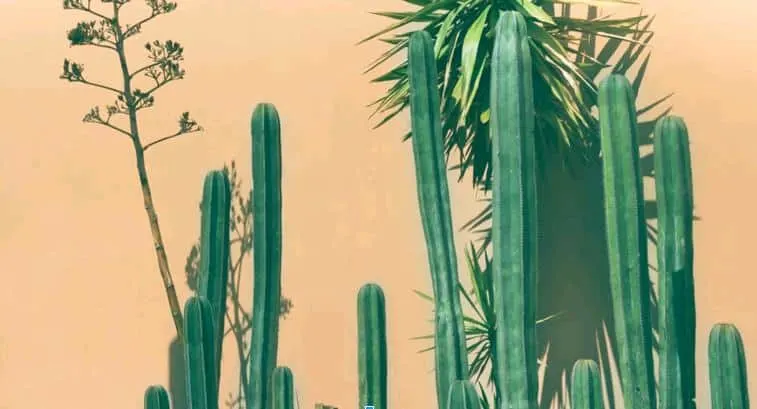
Cereus are some of the most common cacti available out there. Most cereus species are easy to care for and great for beginners. They can be found in the West Indies South America, Brazil and Argentina. Most cereus species will do well in full sun and heat.
Echinocereus (Hedgehog Cactus)
Echinocereus grow in cylindrical fashion, usually small to medium in size with ribs and covered in densely tight spines. They are commonly referred to as hedgehog cactus. They do well outdoors and as container plants. They need bright light and good drainage is essential. The larger echinocereus species do well in full sun and intense heat.
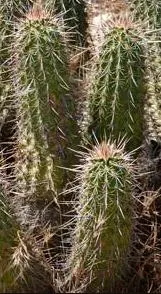
Ferocactus
Ferocactus, commonly known as barrel cactus, is a very popular cacti genus. They can grow very large, upto 10 feet tall (3 meters) tall and 3 feet (0.9 meters) wide. They are known for their cylindrical shape that are covered in ribs with long, sharp spines. They range across the south-west USA and northern Mexico regions. Most ferocactus species can tolerate full sun and intense heat, aw well as mild frost, making them versatile plants that can be kept both outdoors and indoors.
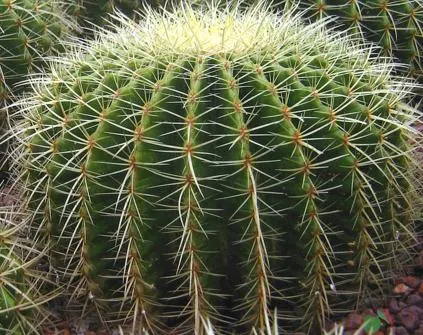
For ideas on where to purchase shade cloths and sun protection for your succulents, please click on my Outdoor Resources Page.
If you are wondering where you can purchase succulents and cacti online, please check out my Resource Page for recommendations.
